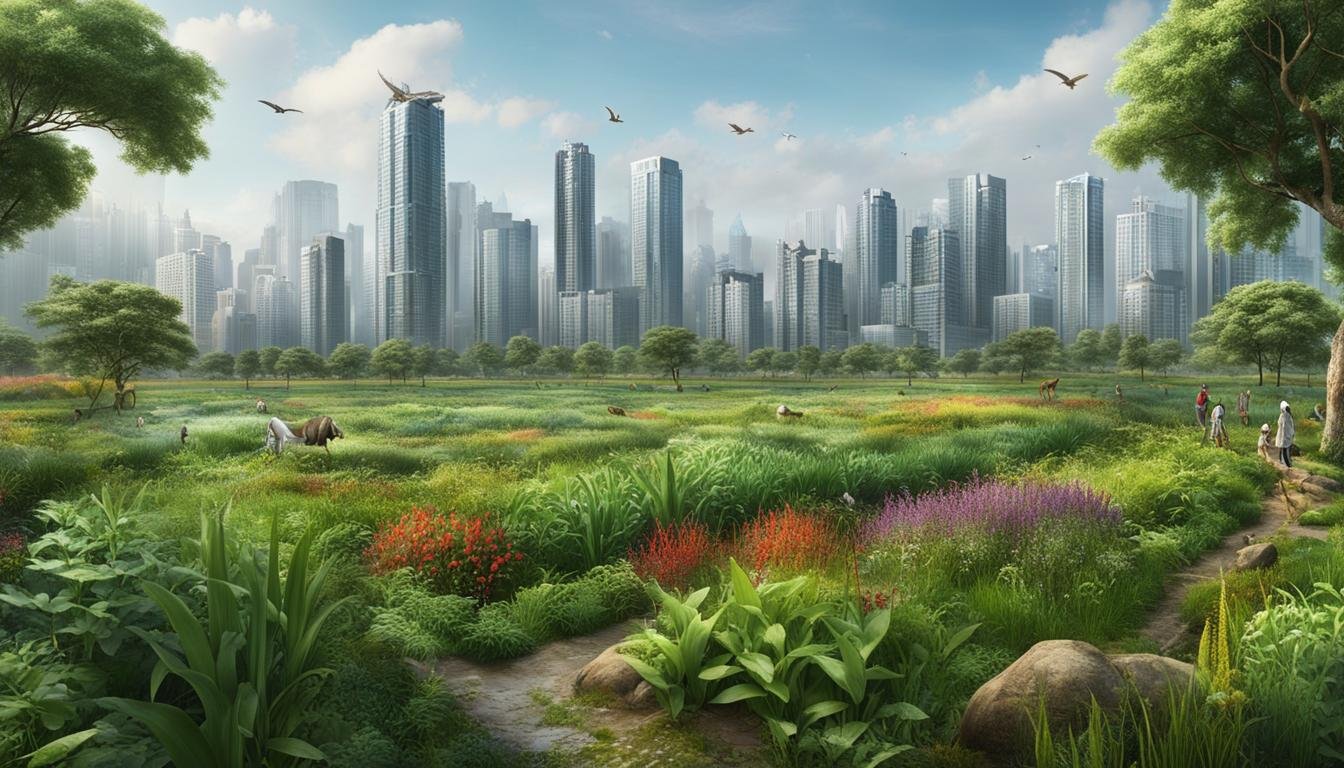Madagascar Biodiversity and the Built Environment
Did you know that Madagascar is home to approximately 5% of the world’s biodiversity, with over 90% of its wildlife found nowhere else on Earth? This stunning island nation, located off the eastern coast of Africa, boasts an incredible array of unique plant and animal species. However, the delicate balance of Madagascar’s ecosystems is under threat, primarily due to human activities and the impact of urbanization.
Key Takeaways:
- Madagascar is a biodiversity hotspot, with a significant proportion of the world’s unique species.
- The fragile ecosystems of Madagascar are facing multiple threats, including deforestation, hunting, trafficking, invasive species, and climate change.
- Conservation efforts and sustainable development are crucial to preserve Madagascar’s biodiversity and ensure a sustainable future for the country.
- International cooperation and the involvement of conservation organizations play a vital role in protecting Madagascar’s ecosystems and species.
- Preserving natural habitats is essential for the conservation of species and the sustainability of ecosystems in Madagascar.
The Threat of Deforestation and Forest Degradation
Deforestation and forest degradation pose significant threats to the terrestrial ecosystems of Madagascar. The natural forest cover in Madagascar has been dramatically reduced to approximately 12% due to various factors, including traditional agricultural techniques like “tavy” and population pressure. These destructive practices result in the loss of critical habitat for numerous species and contribute to the alarming issue of climate change.
Deforestation refers to the complete removal of forests, while forest degradation refers to the decline in the quality and health of the remaining forests. Both processes have devastating consequences for biodiversity and ecosystem stability.
The traditional agricultural technique known as “tavy” involves slash-and-burn practices, wherein farmers clear patches of forests by cutting down trees and setting them on fire. While this technique has been practiced for generations to create fertile land for cultivation, its indiscriminate application leads to widespread deforestation and the destruction of natural forest cover.
Furthermore, population pressure exacerbates the issue of deforestation in Madagascar. The country’s growing population has resulted in increased demand for land and resources, driving the expansion of agricultural activities and the encroachment into natural forest areas. As a result, the remaining forests are under constant threat and face substantial degradation.
Deforestation and forest degradation have far-reaching consequences. Loss of forest cover disrupts delicate ecosystems, leading to the displacement and extinction of many endemic species. Additionally, forests play a vital role in mitigating climate change by absorbing and storing carbon dioxide, but their destruction contributes to increased greenhouse gas emissions, exacerbating the global climate crisis.
The Impact of Deforestation and Forest Degradation
| Effects of Deforestation and Forest Degradation | Consequences |
|---|---|
| Loss of Habitat | Innumerable plant and animal species lose their homes, leading to decreased biodiversity. |
| Soil Erosion | Without the protective cover of trees, soil erosion becomes rampant, degrading land productivity. |
| Increased Flooding | Deforestation reduces the capacity of forests to absorb and retain water, leading to increased flooding and soil erosion. |
| Climate Change | The loss of trees releases stored carbon into the atmosphere, contributing to global warming and further climate change. |
| Loss of Traditional Knowledge | Indigenous communities, who have relied on forests for resources and cultural practices, experience the erosion of their traditional knowledge. |
Efforts to combat deforestation and forest degradation are crucial for the conservation of Madagascar’s unique biodiversity and the preservation of terrestrial ecosystems. Implementing sustainable land management practices, promoting reforestation initiatives, and raising awareness about the importance of natural forest cover are essential steps towards halting the destructive cycle and ensuring a sustainable future for Madagascar.
Hunting for Local Consumption
Hunting for local consumption poses a significant threat to the unique biodiversity of Madagascar. Particularly, the hunting of bushmeat has negative impacts on various species, including lemurs, bats, turtles, and primates. This not only disrupts the delicate balance of the ecosystem but also affects the thriving tourism industry in the country.
The consumption of bushmeat has increased in Madagascar, primarily driven by the protein needs of local communities and local trade. As a result, endemic species that are already vulnerable due to habitat loss and climate change face additional pressure from hunting activities.
| Impacts of Hunting for Local Consumption | Effect |
|---|---|
| Loss of biodiversity | Hunting reduces populations of endemic species, disrupting the natural balance of ecosystems. |
| Economic implications | The decline in wildlife populations negatively affects the tourism industry, which heavily relies on Madagascar’s rich biodiversity. |
| Ecological consequences | The removal of key species can lead to cascading effects, impacting other components of the ecosystem. |
| Threat to endemic species | Endemic species, unique to Madagascar, are particularly vulnerable to hunting and face the risk of extinction. |
To address this issue and protect the endemic species and fragile ecosystems, sustainable hunting practices need to be emphasized. Engaging local communities in conservation efforts and providing alternative sources of protein can help reduce the dependency on bushmeat.
Sustainable hunting practices that ensure the long-term viability of endemic species are crucial for the preservation of Madagascar’s remarkable biodiversity.
Furthermore, promoting awareness about the ecological importance of conserving wildlife and implementing strict regulations to prevent illegal hunting are essential steps towards safeguarding Madagascar’s unique natural heritage.
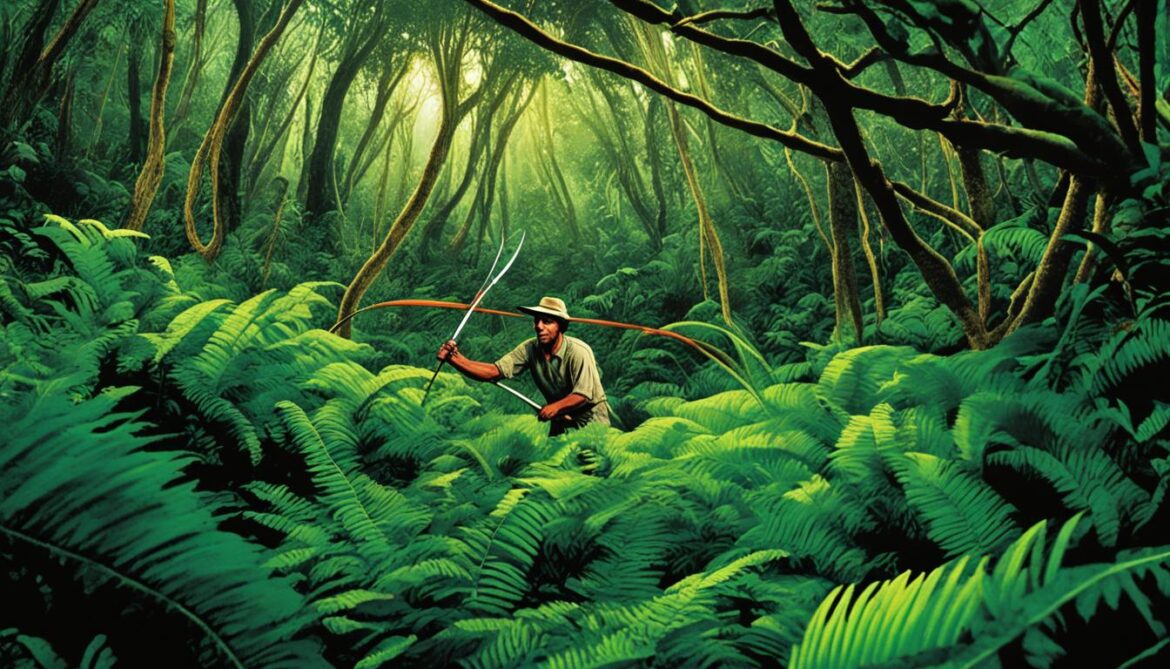
Trafficking of Animal and Plant Species
The trafficking of animal and plant species for international trade poses a significant threat to the rich biodiversity of Madagascar. Despite the country’s ratification of the Convention on International Trade in Endangered Species of Wild Fauna and Flora (CITES), the enforcement of regulations is often inadequate to combat this illegal trade.
This illicit trafficking not only endangers endemic species but also contributes to the introduction of invasive species, further disrupting the delicate balance of Madagascar’s ecosystems. The demand for exotic wildlife and rare plant species fuels this trade, driven by international markets and the desire for novelty and rarity.

Madagascar is known for its unique flora and fauna, with numerous species found nowhere else on Earth. The illegal trafficking of these endemic species not only leads to biodiversity loss but also threatens the livelihoods of local communities who depend on sustainable eco-tourism.
“The trafficking of endangered animal and plant species is a global issue that requires concerted efforts from governments, law enforcement agencies, conservation organizations, and the general public. Only by tackling this illicit trade can we safeguard the incredible biodiversity of Madagascar and preserve its natural heritage for future generations.”
The Impact of Trafficking
The trafficking of animal and plant species has far-reaching consequences for Madagascar’s ecosystems and conservation efforts. Some of the key impacts include:
- Loss of biodiversity: Endemic species are particularly vulnerable to exploitation, risking their survival and undermining efforts to protect Madagascar’s unique biodiversity.
- Disruption of ecosystems: The introduction of invasive species through illegal trade can have devastating effects on native flora and fauna, leading to the collapse of ecosystems and the loss of important ecological services.
- Revenue loss: The illegal trade in wildlife and plants deprives the country of potential revenue from sustainable eco-tourism, which can support local communities and fund conservation initiatives.
- Increased vulnerability to climate change: Trafficking exacerbates the vulnerability of ecosystems to climate change by reducing resilience and disrupting natural processes.
- Undermining development: The illegal wildlife trade undermines sustainable development efforts in Madagascar by depleting natural resources, hindering conservation initiatives, and undermining local livelihoods.
The Role of CITES and International Cooperation
CITES plays a vital role in regulating and monitoring the international trade in endangered species. However, effective enforcement of CITES regulations in Madagascar remains a challenge, highlighting the need for strengthened national and international cooperation in combating trafficking.
International collaboration is crucial to address the demand for and supply of illegally traded wildlife and plants. This includes efforts to improve law enforcement, enhance border control measures, and raise awareness about the negative impacts of trafficking.
| Key Actions to Tackle Trafficking | Beneficiaries |
|---|---|
| Strengthening legislation and penalties for wildlife trafficking | National government, law enforcement agencies |
| Enhancing international cooperation and information sharing | Interpol, CITES, conservation organizations |
| Fostering community engagement and sustainable alternative livelihoods | Local communities, NGOs |
| Increasing public awareness and education on the impacts of trafficking | General public, tourists |
By addressing the root causes of trafficking and implementing comprehensive strategies, Madagascar can bolster its efforts to combat illegal trade and protect its invaluable biodiversity.
The conservation of animal and plant species requires a collective commitment from individuals, governments, and organizations worldwide. Only through international cooperation and sustained action can we ensure the survival of Madagascar’s unique endemic species and the preservation of its extraordinary natural heritage.
Invasive Alien Species
Invasive alien species pose a significant threat to Madagascar’s unique biodiversity. These species disrupt ecosystems and outcompete native flora and fauna, leading to a decline in endemic species and overall biodiversity.
Invasive species, also known as non-native or introduced species, are organisms that are not originally from a particular ecosystem but have been introduced to it, either intentionally or unintentionally. These species can have detrimental effects on the native species and the overall functioning of the ecosystem.
One example of an invasive species in Madagascar is the Asian common toad (Duttaphrynus melanostictus), which was introduced for biocontrol purposes but has since become a major threat to native amphibians.
Invasive species often have characteristics that allow them to thrive and outcompete native species. They may have no natural predators in the new ecosystem, reproduce rapidly, consume resources that are essential for native species, or have adaptations that give them a competitive edge.
The presence of invasive species can disrupt the delicate balance of ecosystems in Madagascar. They can outcompete native species for resources such as food and nesting sites, leading to a decline in the population and diversity of endemic species. This loss of biodiversity can have cascading effects on the entire ecosystem, including changes in nutrient cycling, predator-prey dynamics, and ecosystem resilience.
In addition to outcompeting native species, invasive species can also introduce new diseases and parasites to an ecosystem. This can further impact the health and survival of native species, especially those that have not evolved to resist such pathogens.
To mitigate the impact of invasive alien species, it is important to strengthen monitoring and early detection systems, develop rapid response strategies, and implement effective control measures. These efforts should be integrated into broader conservation strategies and involve collaboration between government agencies, local communities, and conservation organizations.
“The introduction of invasive alien species is one of the greatest threats to biodiversity, second only to habitat destruction.” – United Nations Environment Programme
In conclusion, the presence of invasive alien species poses a significant threat to the unique biodiversity of Madagascar. Efforts to prevent the introduction and spread of invasive species are essential for the conservation of endemic species and the overall health of ecosystems. Through proactive monitoring, strict biosecurity measures, and effective management strategies, it is possible to mitigate the negative impact of invasive species and protect the natural heritage of Madagascar for future generations.
| Effects of Invasive Species in Madagascar | Examples |
|---|---|
| Displacement of native species | Asian common toad (Duttaphrynus melanostictus) |
| Competition for resources | Water hyacinth (Eichhornia crassipes) |
| Alteration of ecosystem processes | Yellow crazy ant (Anoplolepis gracilipes) |
| Introduction of diseases and parasites | Mosquito species carrying malaria |
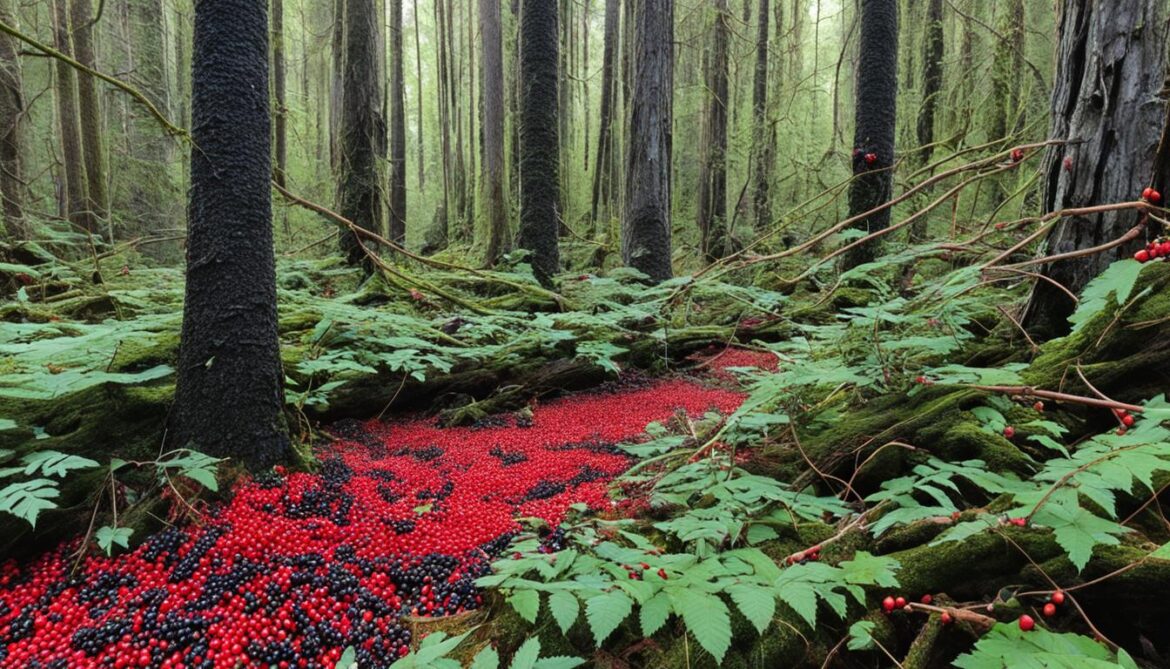
Impact of Climate Change
One of the most significant threats to Madagascar’s ecosystems is climate change. This global phenomenon has far-reaching consequences, particularly for the marine ecosystem, putting Indian Ocean corals and the delicate balance of marine life at risk. One of the prominent effects of climate change on marine ecosystems is coral bleaching.

Coral reefs are essential for the marine ecosystem as they provide habitats for a vast array of marine species. However, rising ocean temperatures caused by climate change can lead to coral bleaching. This process occurs when corals expel the algae living within their tissues, causing them to turn white. While corals can recover from mild bleaching events, severe and prolonged bleaching can result in coral death and the subsequent degradation of the marine ecosystem.
The Indian Ocean corals, including those found around Madagascar, are particularly vulnerable to coral bleaching due to the warming waters. Studies have shown that the Indian Ocean has experienced more frequent and severe coral bleaching events in recent decades. If climate change continues unabated, these vital coral reefs in the Indian Ocean could disappear within the next few decades, posing a significant threat to marine biodiversity and the delicate balance of the ecosystem.
The Importance of Sustainable Development and Conservation
Sustainable development and conservation efforts are crucial in Madagascar to protect the country’s rich biodiversity and ensure a sustainable future. These initiatives involve sustainable land management, reforestation, responsible hunting practices, and awareness campaigns.
One of the key aspects of sustainable development in Madagascar is the implementation of sustainable land management practices. This involves promoting sustainable agriculture techniques that minimize soil erosion and maintain soil fertility. By adopting these practices, the country can meet its agricultural needs while preserving its natural resources for future generations.
Reforestation plays a vital role in conservation efforts in Madagascar. The country has experienced significant deforestation, leading to the loss of vital habitats for numerous plant and animal species. Reforestation initiatives aim to restore these habitats and enhance biodiversity protection.
Responsible hunting practices are also essential for the conservation of Madagascar’s biodiversity. By establishing regulations and promoting sustainable hunting methods that prioritize the preservation of species, the country can strike a balance between the needs of local communities and the protection of its unique wildlife.
“Conservation is a state of harmony between men and land.”
Awareness campaigns play an integral role in promoting sustainable development and conservation in Madagascar. By educating the public about the importance of biodiversity protection and the long-term benefits of sustainable practices, these campaigns inspire collective action and foster a sense of responsibility towards the environment.
The Role of International Cooperation
International cooperation is crucial in supporting Madagascar’s sustainable development and conservation efforts. Collaboration between government agencies, non-profit organizations, and global partners can provide the necessary resources and expertise to address the complex challenges the country faces.
Through international cooperation, Madagascar can benefit from knowledge sharing, technical assistance, and financial support for conservation projects. This collaboration helps ensure the effectiveness of sustainable development initiatives and strengthens the country’s capacity to protect its biodiversity.
The Benefits of Sustainable Development and Conservation
Investing in sustainable development and conservation yields numerous benefits for Madagascar. These include:
- Preservation of unique species and ecosystems
- Protection of natural resources for future generations
- Enhancement of ecosystem services, such as clean water and air
- Promotion of responsible tourism that generates revenue and supports local communities
- Contribution to global climate change mitigation efforts

| Key Principles of Sustainable Development | Benefits |
|---|---|
| Promoting ecological balance and biodiversity protection | Preservation of unique species and habitats |
| Ensuring social inclusivity and equity | Empowerment of local communities and reduction of social disparities |
| Practicing efficient resource use and waste management | Conservation of natural resources and reduction of environmental impact |
| Adopting renewable energy sources and green technologies | Contribution to climate change mitigation and reduction of carbon emissions |
By prioritizing sustainable development and conservation, Madagascar can secure a prosperous future where biodiversity thrives, communities thrive, and the environment flourishes.
Human Impacts on Ecosystems and Biodiversity
Human activities, such as deforestation and hunting, have deeply disturbed ecosystems and biodiversity in Madagascar. These actions have had severe repercussions on the delicate balance of the country’s natural environment.
Poverty and underdevelopment exacerbate the impacts, as rural populations rely heavily on natural resources for their livelihoods. The need to meet basic survival needs often leads to unsustainable practices, putting further strain on already vulnerable ecosystems.
The degradation of ecosystems is not limited to Madagascar alone. In neighboring countries like Mauritius, Seychelles, and Réunion, the consequences of human activities have also posed unique challenges for biodiversity conservation. The ongoing environmental degradation across these regions calls for immediate action to preserve the rich biodiversity that they house.
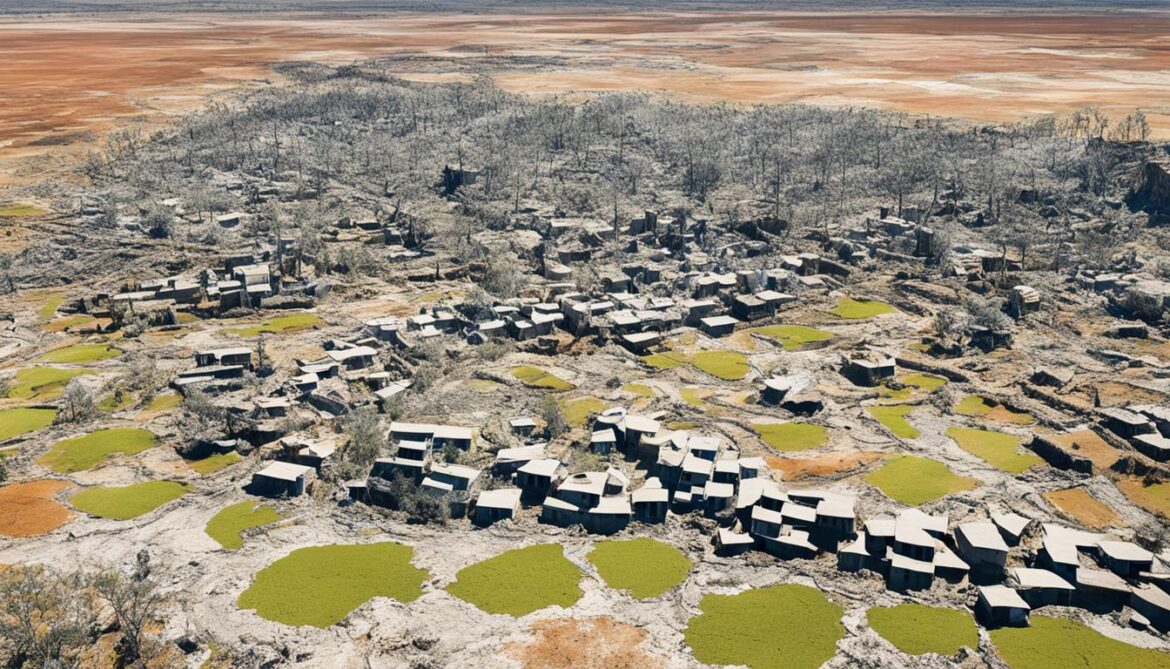
“The future of Madagascar’s biodiversity and ecosystems depends on our ability to address the human impacts and promote sustainable practices. By working together, we can ensure a brighter future for both the people and wildlife of this incredible island.”
Recognizing the urgency of the situation, it is crucial to implement measures that tackle the root causes of underdevelopment and poverty while promoting sustainable practices that minimize further degradation. Sustainable land management, reforestation initiatives, and responsible hunting practices are essential in restoring ecological balance and protecting threatened species.
Unique Challenges Faced in Conservation Efforts
Conserving biodiversity in Madagascar comes with unique challenges due to the social and economic context of the country. It requires a multidimensional approach that addresses both the immediate needs of local communities and the long-term conservation of natural resources.
Developing effective conservation strategies for Madagascar and its neighboring regions necessitates a comprehensive understanding of the underlying socio-economic factors driving environmental degradation. By addressing poverty and promoting sustainable development, it is possible to reduce the negative impacts on biodiversity and foster a mutually beneficial relationship between communities and their natural surroundings.
| Challenges | Impact |
|---|---|
| Underdevelopment | Weak infrastructure and limited access to basic services hinder conservation efforts and create additional pressure on ecosystems. |
| Poverty | Rural communities depend heavily on natural resources for their livelihoods, exacerbating environmental degradation through unsustainable practices. |
| Degradation | Human activities, such as deforestation and hunting, have led to the loss of habitat for numerous species, resulting in biodiversity decline. |
Addressing these challenges requires collaboration among stakeholders, including local communities, government agencies, non-profit organizations, and international partners. Together, they can implement initiatives that prioritize sustainable development, poverty alleviation, and the conservation of Madagascar’s unique biodiversity.
The Role of Conservation Organizations and International Cooperation
Conservation organizations and international cooperation are pivotal in safeguarding Madagascar’s extraordinary biodiversity. By joining forces, these entities work towards enforcing regulations, implementing effective conservation strategies, and combating illegal activities that jeopardize the protection of precious ecosystems and diverse species.
The collaborative efforts between conservation organizations and international bodies are vital for the long-term preservation of Madagascar’s unique biodiversity. By sharing resources, knowledge, and expertise, these entities can bolster conservation initiatives and address the complex challenges that threaten the country’s natural heritage.
“Conservation is a global responsibility. Through international cooperation and partnerships, we can secure Madagascar’s biodiversity for future generations.”
Effective enforcement of regulations is paramount to combat illegal activities such as wildlife trafficking, habitat destruction, and unsustainable practices. Conservation organizations and international collaboration provide the necessary mechanisms to monitor and deter these activities, ensuring the protection of Madagascar’s precious natural resources.
Moreover, these partnerships enable the implementation of comprehensive conservation measures that consider not only the ecological aspects but also the social and economic factors. By engaging local communities and stakeholders, conservation organizations can foster sustainable practices, ensuring that the protection of biodiversity goes hand in hand with the well-being of the people who depend on these ecosystems.
Examples of Conservation Organizations and Their Contributions
| Organization | Contributions |
|---|---|
| WWF (World Wide Fund for Nature) | Supports community-led conservation projects, conducts research, and advocates for sustainable practices. |
| Conservation International | Focuses on protected area management, sustainable agriculture, and climate change mitigation to protect biodiversity. |
| Lemur Conservation Foundation | Dedicated to lemur conservation through research, habitat restoration, and community engagement. |
Through collaborative efforts and international partnerships, conservation organizations and the global community can contribute to the protection and preservation of Madagascar’s rich biodiversity. By promoting sustainable practices and raising awareness, we can ensure the sustainable future of this remarkable island and its unique ecosystems.
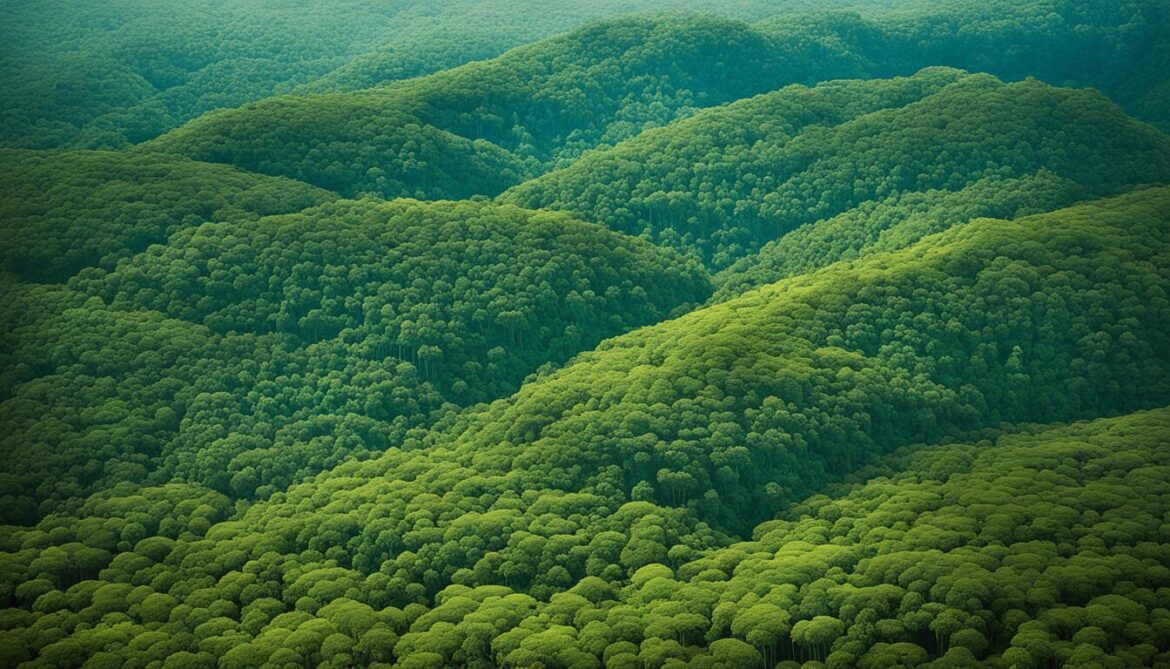
The Importance of Preserving Natural Habitats
Preserving natural habitats in Madagascar is essential for the conservation of species and the sustainability of ecosystems. The island’s fragile ecosystems are home to a vast array of unique and endemic plants and animals found nowhere else on Earth. Without proper conservation measures, these species are at risk of extinction.
Sustainable land management is key to preserving natural habitats and mitigating the negative impacts of human activities. Reforestation efforts can help restore degraded areas and provide crucial habitats for endangered species. By protecting and restoring natural habitats, we can create interconnected corridors that allow for the movement of wildlife and promote species conservation.
Endangered habitats, such as rainforests, wetlands, and coral reefs, require special attention and protection. These ecosystems are particularly vulnerable to human encroachment, climate change, and pollution. By implementing strict regulations and establishing protected areas, we can safeguard these habitats and ensure their long-term survival.
| Benefits of Preserving Natural Habitats: |
|---|
| – Protection of biodiversity |
| – Preservation of ecosystem services |
| – Maintenance of ecological balance |
| – Support for sustainable development |
Preserving natural habitats goes beyond conservation; it plays a crucial role in sustainable development. These habitats provide important ecosystem services such as water purification, soil fertility, and climate regulation. Additionally, they support ecotourism activities, generating economic opportunities for local communities while ensuring the protection of biodiversity.
Quote:
“The preservation of natural habitats is not only a matter of environmental conservation but also a fundamental commitment to sustainable development and the well-being of future generations.” – Dr. Jane Foster, Conservation Biologist
By prioritizing natural habitats preservation and implementing conservation strategies, we can secure the future of Madagascar’s unique biodiversity and fragile ecosystems. It requires collective efforts from governments, conservation organizations, local communities, and individuals to ensure the long-term sustainability of this remarkable island.
Opportunities for Study and Research in Madagascar
Madagascar offers unique opportunities for study and research in the field of environmental studies, ecology, biology, and related fields. Students have the chance to explore the diverse ecosystems, work alongside local communities, and contribute to conservation efforts.
Studying abroad in Madagascar provides students with hands-on experience in researching and understanding the intricacies of the country’s rich biodiversity. Whether it’s studying the unique flora and fauna in the rainforests or investigating the impact of climate change on marine ecosystems, there are endless research topics to explore.
One of the captivating research areas in Madagascar is environmental studies, focusing on the conservation and preservation of natural habitats. Students can delve into studying the effects of deforestation, hunting, and invasive species on the indigenous wildlife. By understanding these threats, researchers can develop effective strategies to mitigate these challenges and protect the fragile ecosystems.
Research Opportunities
In the field of biology, students can study the endemic species found only in Madagascar. From lemurs to chameleons, the island is home to a remarkable array of unique creatures. Research can focus on understanding their behavior, genetics, and the impact of human activities on their populations.
| Research Opportunities | Benefits |
|---|---|
| Ecology | Study diverse ecosystems and their interactions |
| Conservation Biology | Contribute to conservation efforts and species preservation |
| Environmental Science | Investigate the impact of human activities on the environment |
| Marine Biology | Explore coral reefs and their vulnerability to climate change |
Studying abroad in Madagascar also presents an opportunity to engage with local communities. Collaborating with indigenous groups, students can learn about traditional knowledge and sustainable practices. This cross-cultural exchange enhances research outcomes and fosters a deeper appreciation for different approaches to environmental stewardship.
“Studying and conducting research in Madagascar expands your understanding of biodiversity and conservation strategies. The first-hand experience allows you to witness the challenges and develop innovative solutions.” – Dr. Julia Thompson, Professor of Environmental Science at Yale University
Research institutions and universities in Madagascar provide necessary support and guidance to students. They offer access to well-equipped labs, extensive research libraries, and fieldwork opportunities. This allows students to gather data, conduct experiments, and draw insightful conclusions to contribute to the existing body of knowledge.
By studying and conducting research in Madagascar, students become active contributors to the preservation of biodiversity. They can make significant contributions to understand the interplay between human activities and the natural environment, leading to sustainable solutions for coexistence.
Conclusion
Madagascar’s biodiversity and the built environment are intricately connected, forming the foundation for the country’s sustainable development. The conservation of natural habitats and the implementation of sustainable urban planning are crucial for the protection of Madagascar’s unique biodiversity and fragile ecosystems.
Efforts to safeguard the wealth of Madagascar’s biodiversity require collaboration at local, national, and international levels. By working together, we can promote sustainable practices that minimize the impact on natural ecosystems and ensure the long-term preservation of valuable species.
Furthermore, sustainable urban planning plays a vital role in minimizing the disruption of natural habitats and promoting eco-friendly infrastructure development. By integrating conservation principles into urban design, we can create harmony between human settlements and the surrounding environment, fostering a sustainable and resilient future.
Ultimately, the preservation of Madagascar’s biodiversity and the implementation of sustainable urban planning go hand in hand. By prioritizing conservation efforts and adopting sustainable practices, we can protect the country’s natural heritage and pave the way for a prosperous and environmentally sustainable future.
FAQ
What is the main threat to Madagascar’s terrestrial ecosystems?
The main threat to Madagascar’s terrestrial ecosystems is deforestation and forest degradation, which have significantly reduced the natural forest cover.
What are the impacts of deforestation on biodiversity in Madagascar?
Deforestation leads to the loss of habitat for many species and contributes to climate change, posing a major threat to the unique biodiversity found in Madagascar.
How does hunting impact Madagascar’s biodiversity?
Hunting for local consumption, particularly for bushmeat, poses a threat to various species in Madagascar, affecting both the ecosystem and the tourism industry.
What is the major concern regarding the trafficking of animal and plant species in Madagascar?
The trafficking of animal and plant species for international trade is a major concern as it poses a risk to endemic species and contributes to the introduction of invasive species.
How do invasive alien species affect Madagascar’s biodiversity?
Invasive alien species disrupt ecosystems and outcompete native flora and fauna, leading to a decline in endemic species and overall biodiversity in Madagascar.
What is the impact of climate change on Madagascar’s marine ecosystem?
Climate change, particularly rising ocean temperatures, poses a significant risk to Madagascar’s marine ecosystems, including coral reefs that are vital for the marine ecosystem.
What are the efforts needed for the protection of Madagascar’s biodiversity?
Sustainable development and conservation efforts are crucial, including sustainable land management, reforestation, responsible hunting practices, and awareness campaigns.
How do human activities affect ecosystems and biodiversity in Madagascar?
Human activities, such as deforestation and hunting, have deeply disturbed ecosystems and biodiversity in Madagascar, exacerbated by poverty and underdevelopment.
What role do conservation organizations and international cooperation play in Madagascar biodiversity conservation?
Conservation organizations and international cooperation play a crucial role in protecting Madagascar’s biodiversity by enforcing regulations, implementing conservation measures, and combating illegal activities.
Why is preserving natural habitats important for Madagascar’s biodiversity?
Preserving natural habitats is essential for the conservation of species and the sustainability of ecosystems in Madagascar, contributing to the overall biodiversity preservation.
What opportunities does Madagascar offer for study and research in environmental studies and related fields?
Madagascar offers unique opportunities for study and research in environmental studies, ecology, biology, and related fields, allowing students to explore diverse ecosystems and contribute to conservation efforts.
How does Madagascar’s biodiversity relate to the built environment and sustainable development?
Madagascar’s biodiversity and the built environment are intricately connected, and the conservation of natural habitats and sustainable urban planning are essential for the country’s sustainable development.





